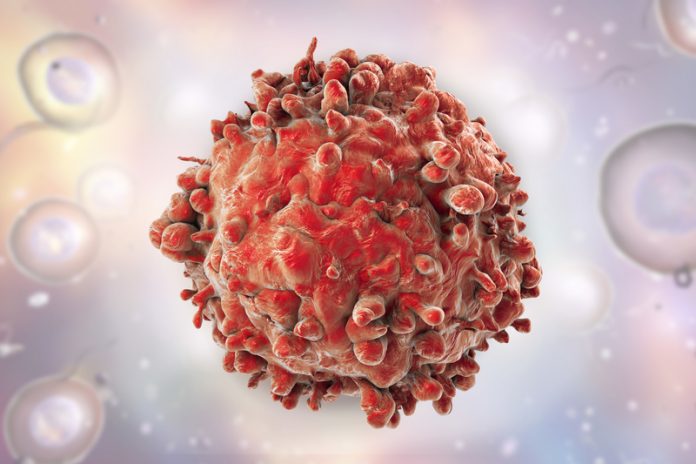Cecilia Van Cauwenberghe from Frost & Sullivan’s TechVision Group gives an overall perspective on the challenges and concerns around acute promyelocytic leukaemia (APL), a type of blood cancer
Acute promyelocytic leukaemia (APL), an aggressive subtype of acute myeloid leukaemia (AML), a type of blood cancer, is characterised by an increment in the number of immature blood-forming cells (promyelocytes) present in blood and bone marrow. The accumulation of promyelocytes drives to a deficiency in normal white and red blood cells and platelets in the organism. Therefore, among the most commonly observed symptoms of APL, an augmented risk to bleed and form blood clots is evidenced, accompanied by unnecessary exhaustion, pain, loss of appetite, and weight loss, among other signs.
Normally affecting middle-aged adults, APL can also be diagnosed during childhood. Its principal cause relates to a genetic mutation that involves a translocation between two chromosomes, evidencing the breaking off of a part of chromosome 15, to be then exchanged with a part of chromosome 17. This mutation precedes the production of the protein that causes blood cell development to get affixed at the promyelocytic stage.
According to the U.S. National Institute of Health (NIH), APL accounts for about 5-15% of all adult leukaemias, represented by approximately 30,800 cases diagnosed yearly. Treatment is generally based on the use of alltrans retinoic acid (ATRA), a specialised form of vitamin A, and arsenic trioxide (ATO), in addition to anthracycline-based chemotherapy (Kayser et al., 2018). Indeed, ATRA represents an induction therapy capable of getting the patient into remission by shoving all promyelocytes into maturity. However, this therapy cannot cure the source of APL. Hence, patients are directed to consolidation chemotherapy (Pettit and Larson, 2018). The patient is then maintained with ATRA for another period, usually combined with other therapeutics. The reason is that present therapy for APL is refractory to initial therapy or eventually relapse in approximately 70% of cases due to the chemo-resistant nature of the leukaemic stem cells (LSCs).
Opportunities and solutions
During the past five years, novel anti-LSCs therapies begun to gain attention as new approaches to decrease relapses and improve survival in patients with APL (Singh et al., 2018). Both researchers and clinicians are seeing with interest in silico tests (computational modelling and simulation) to achieve a better prognosis of human APL LSCs gene expression signatures (Laverdière et al., 2018). These approaches utilise available datasets of drug-gene interactions to critically recognise those compounds expected to target LSCs gene sequences. Further, in vitro LSCs assays allow screening therapeutic candidates to treat APL (Cicconi et al., 2018).
The most relevant candidates resulting from these approaches belong to three drug families: antihistamines, comprehending astemizole and terfenadine; cardiac glycosides, including k-Strophanthidin, digoxin and ouabain; and glucocorticoids, comprising budesonide, halcinonide and mometasone.
A step forward is that the use of immunotherapy is rising as the promise for the treatment of hematologic malignancies, including APL. Chimeric antigen receptor (CAR)-T cells exploit the specificity of monoclonal antibodies (mAbs) to find and attach tumour antigens to complement the cancer cell killing ability of cytotoxic T-cells. The result is a new type of T-cell with the ability to identify a wide spectrum of tumour targets, hence dramatically enhancing the immune system. Multiple early-stage clinical trials investigating CAR T-cell therapy in treatment-refractory lymphoid malignancies have demonstrated meaningful antitumour effects, even leading to complete remission rates (Wiernik et al 2018). Nevertheless, when translating these approaches to targeted immunotherapeutic approaches for APL, the underlying biological heterogeneity of myeloid malignancies, in addition to the absence of accurately tumour-specific surface antigens, other routes need to be investigated.
Final remarks
The synergistic combination of computational modelling and simulation of stem cell gene expression signatures with in vitro screening assays is demonstrating to significantly help to identify novel compounds that target the chemo-resistant nature of LSCs being the underlying cause of relapse in APL. This approach strongly facilitates the discovery and development of novel therapeutics that target LSCs without harming normal hematopoietic stem cells. CAR T-cell approaches are still being explored as potential therapy for APL.
Acknowledgements
I would like to thank all contributors from industry involved with the development and delivery of this article from the TechVision Group at Frost & Sullivan.
References
Cicconi, L., Fenaux, P., Kantarjian, H., Tallman, M., Sanz, M.A. and LoCoco, F., 2018. Molecular remission as a therapeutic objective in acute promyelocytic leukemia. Leukemia, p.1.
Kayser, S., Schlenk, R.F. and Platzbecker, U., 2018. Management of patients with acute promyelocytic leukemia. Leukemia, p.1.
Laverdière, I., Boileau, M., Neumann, A.L., Frison, H., Mitchell, A., Ng, S.W., Wang, J.C., Minden, M.D. and Eppert, K., 2018. Leukemic stem cell signatures identify novel therapeutics targeting acute myeloid leukemia. Blood Cancer Journal, 8(6), p.52.
Pettit, K. and Larson, R.A., 2018. Therapy-Related Acute Promyelocytic Leukemia. Acute Promyelocytic Leukemia: A Clinical Guide, pp.231-242.
Singh, A.A., Petraglia, F., Nebbioso, A., Yi, G., Conte, M., Valente, S., Mandoli, A., Scisciola, L., Lindeboom, R., Kerstens, H. and Janssen-Megens, E.M., 2018. Multi-omics profiling reveals a distinctive epigenome signature for high-risk acute promyelocytic leukemia. Oncotarget, 9(39), p.25647.
Wiernik, P.H., Gallagher, R.E. and Tallman, M.S., 2018. Acute Promyelocytic Leukemia. In Neoplastic Diseases of the Blood (pp. 409-463). Springer, Cham.
Cecilia Van Cauwenberghe, PhD, MSc, BA
Associate Fellow and Senior Industry Analyst
TechVision Group, Frost & Sullivan











